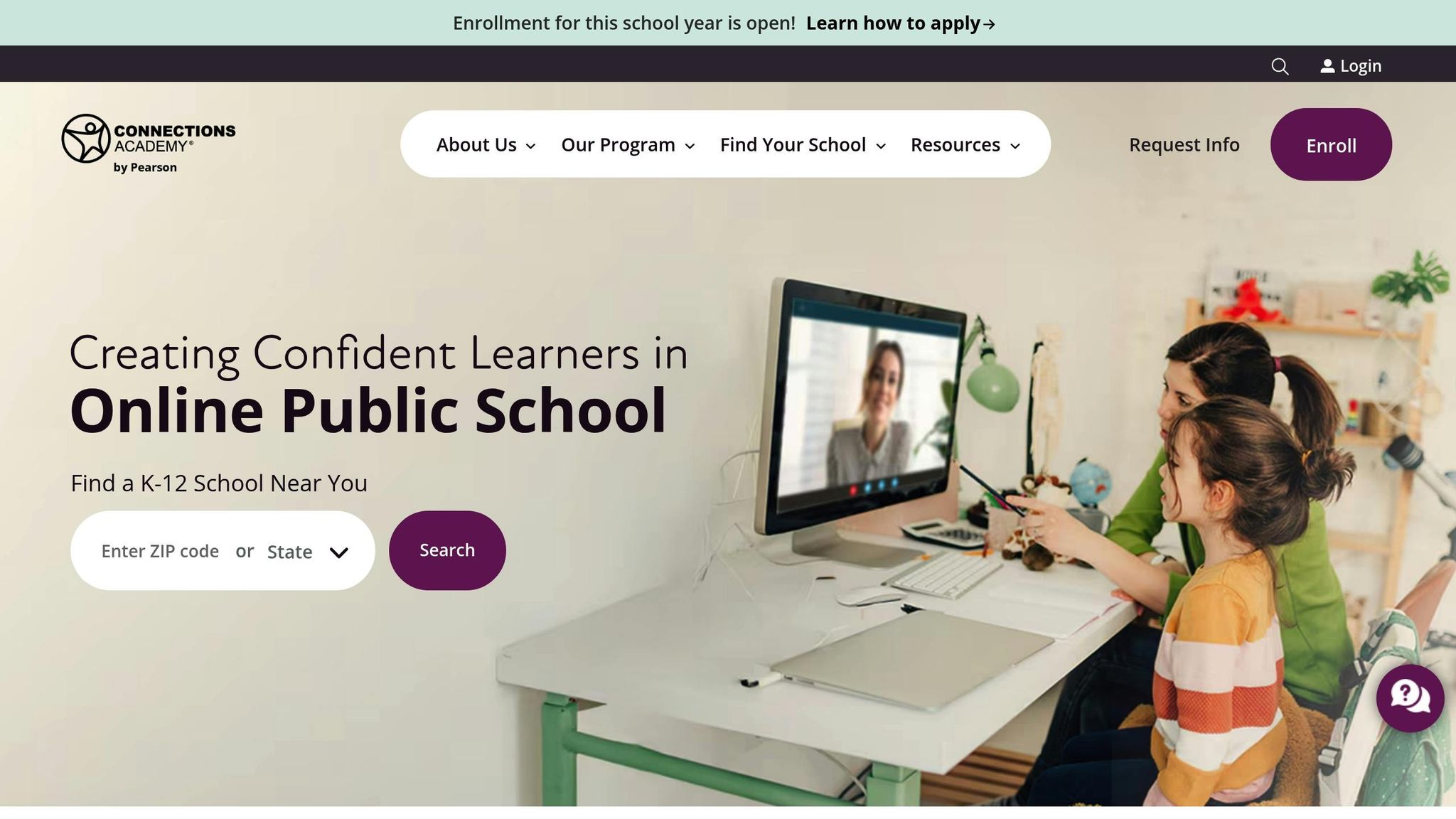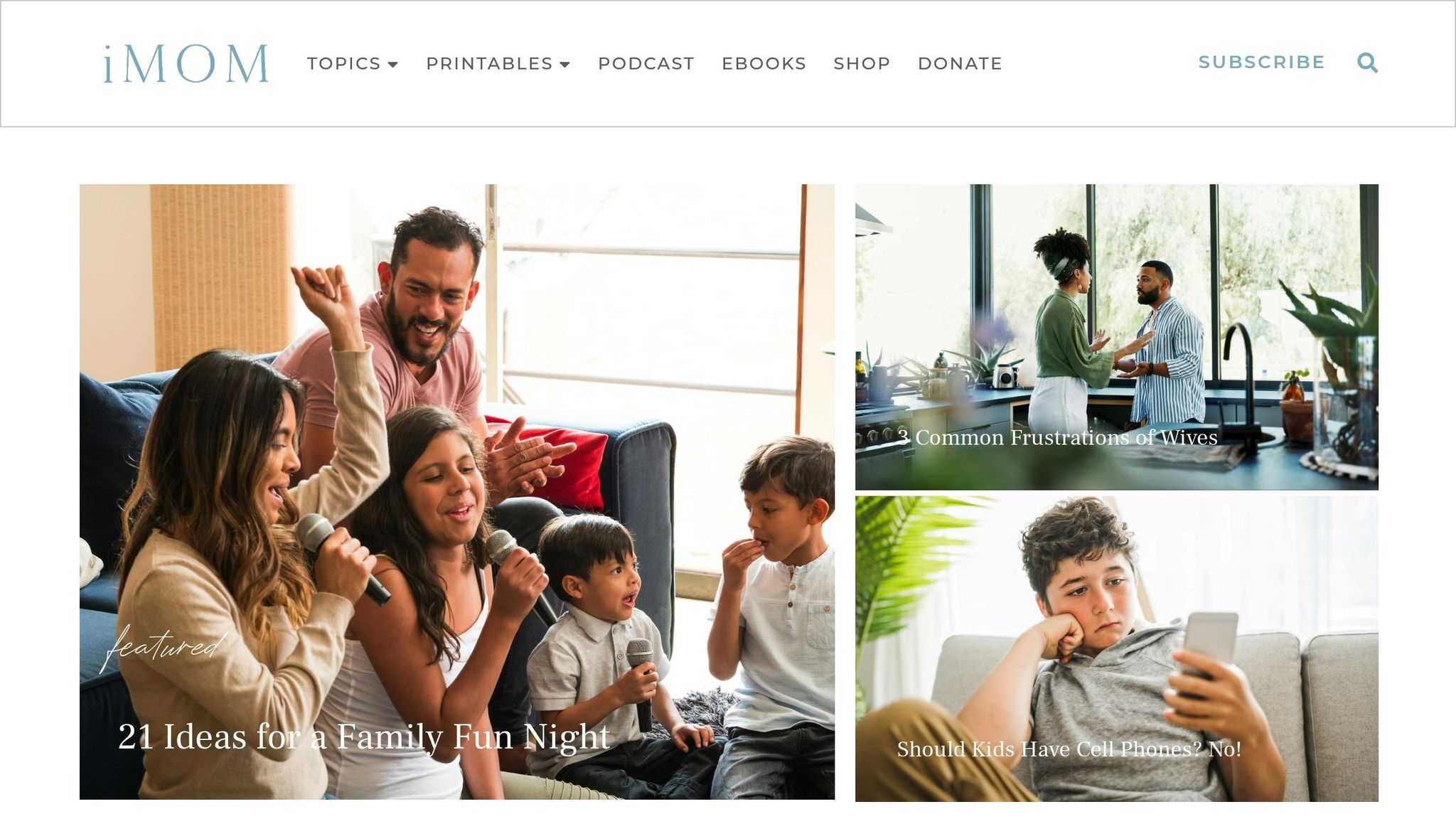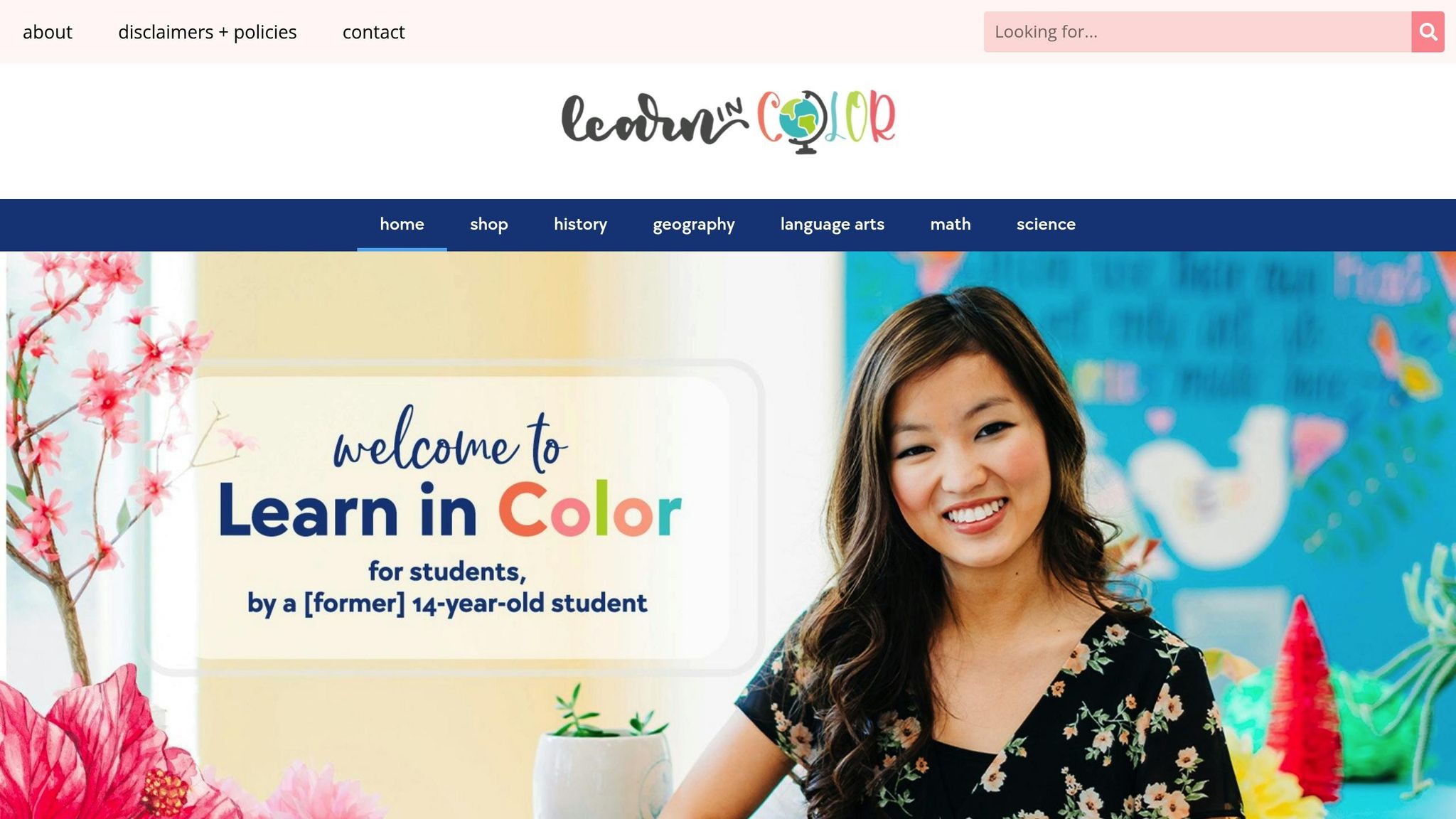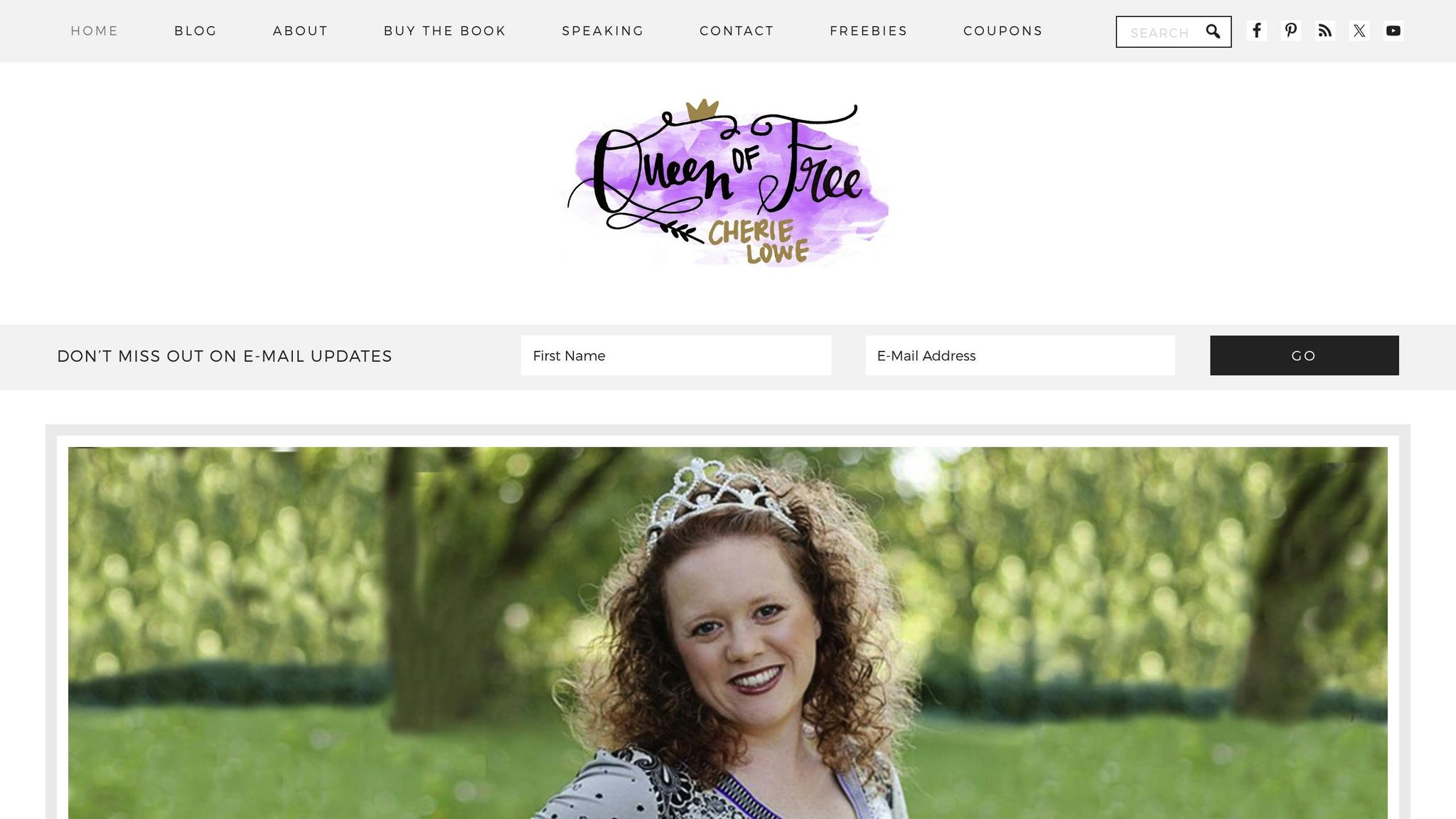Teaching kids to manage money is easier with free printable budget templates. These tools help children track income, expenses, and savings in a fun, hands-on way. Whether they’re earning from a lemonade stand or saving for a toy, these templates simplify budgeting and make it engaging.
Key options include:
- Connections Academy Worksheet: Simple for beginners; focuses on saving and spending.
- Carrie Elle Monthly Budget: Customizable categories with goal-setting features.
- OldSaltFarm Worksheet: Uses the Save, Spend & Share system with visual tracking.
- Money Prodigy Cash Envelopes: Teaches hands-on money separation by category.
- iMom Save, Spend, Share Printable: Encourages giving, saving, and thoughtful spending.
- Learn in Color Sheets: Great for younger kids with basic tracking and goal-setting.
- Christmas-Specific Templates: Tools like Queen of Free and Penney Lane focus on holiday budgeting.
- Wealthy Woman Finance Tracker: Detailed but more suited for older kids or families.
- Just a Girl and Her Blog Binder: Household-focused but adaptable for personal goals.
Each template caters to different needs, from everyday budgeting to holiday planning or small business tracking. Start with a simple format and gradually introduce more detailed tools as kids grow.
Quick Comparison:
| Template | Best For | Key Features | Limitation |
|---|---|---|---|
| Connections Academy Worksheet | Beginners | Simple formula for saving and spending | No business-specific features |
| Carrie Elle Monthly Budget | Visual learners | Customizable categories, goal setting | Limited to personal finance |
| OldSaltFarm Worksheet | Goal-focused savers | Save, Spend & Share jars, visual tracking | Not ideal for business needs |
| Money Prodigy Cash Envelopes | Hands-on learners | Physical cash tracking by category | No digital options |
| iMom Save, Spend, Share Printable | Teaching financial skills | Emphasizes giving and saving | Too basic for entrepreneurs |
| Learn in Color Sheets | Younger kids (6–8) | Basic tracking, goal-setting | Minimal functionality |
| Queen of Free Christmas Template | Holiday planning | Gift and seasonal expense tracking | Seasonal use only |
| Wealthy Woman Finance Tracker | Older kids/families | Detailed expense tracking | Overly complex for young kids |
| Just a Girl and Her Blog Binder | Household management | Binder system with goal tracking | Not tailored for businesses |
Start simple, let kids learn by doing, and choose a template that fits their age and goals.
Budget Worksheet for Kids Printable (PDF)
1. Connections Academy Kid Budget Worksheet

The Connections Academy Kid Budget and Financial Responsibility Worksheet is a great tool for helping elementary students begin to understand money management. It uses a simple formula to explain savings: total weekly income minus total weekly expenses equals weekly savings. Amanda L. Grossman, Chief Creator at Money Prodigy, highlights the worksheet's clarity:
"I like how this sheet shows what 'savings' are: Total (weekly) income – Total (weekly) expenses = Weekly Savings", says Grossman.
This straightforward approach helps kids grasp the concept of saving by showing them that they need to spend less than they earn. It also provides age-appropriate guidance on financial responsibility, making it a helpful resource for parents introducing budgeting to their children in a way that's easy to understand.
The Connections Academy Kid Budget Worksheet is a practical and visually simple tool that lays the groundwork for teaching young learners how to manage their money responsibly.
2. Carrie Elle Monthly Budget Printable
The Carrie Elle Monthly Budget Printable is a straightforward, one-page tool designed for kids aged 7 to 10. It lets them customize income and expense categories, making budgeting both simple and approachable.
"I tried to keep this budgeting form as simple and straightforward as possible. Kids write down what comes in each month and what goes out each month", says Carrie Elle.
To help families get started, the template includes practical examples. For instance, it suggests allowance amounts: $30 per month for a 10-year-old and $21 per month for a 7-year-old. These examples show how families can use the tool in real-life situations.
One key feature of the printable is the goal-setting section at the bottom. Carrie Elle's daughter, Claire, used this space to jot down "bearded dragon" as her savings goal, connecting the budgeting process to something meaningful for kids. There's also a small box to record leftover money, subtly encouraging saving habits.
The design of the template emphasizes simplicity and independence. Its clean layout ensures kids won't feel overwhelmed while filling out their budgets, and a cover page lets them personalize their budgeting binder. These touches make it easier for young users to stay organized and engaged.
This printable is perfect for kids who are ready to take their first steps in managing money. Carrie Elle explains her approach:
"We want them to understand the value of money and take it seriously. They're at an age now where they can start handling their own finances and budget, with some help".
For families looking for a complete system, the printable pairs seamlessly with Carrie Elle's DIY Cash Envelope System for Kids, offering a hands-on way to teach money management.
3. OldSaltFarm Kid's Monthly Budget Worksheet
The OldSaltFarm Kid's Monthly Budget Worksheet is built around the Save, Spend & Share system, which uses physical jars to make budgeting a hands-on experience for kids. Created by Kierste Wade, founder of Old Salt Farm, this approach stands out by turning abstract budgeting into something kids can see and touch.
What makes this worksheet especially engaging is its visual tracking system. Instead of relying on numbers alone, kids can physically track their money in real time. Wade highlights how this method helps children understand their finances:
"They can literally see all of their money–exactly where it went and how much they have to spend. They can also watch as their savings adds up, as well as the amount they're sharing (giving) to others, and being able to actually see it in front of them makes a big impact".
Parents can customize how money is divided among the jars, tailoring the percentages to fit their family’s priorities. For instance, a family might choose a split like 50% SAVE, 10% SHARE, and 40% SPEND.
The worksheet also comes in two color schemes - pink tones or reds and blues - so kids can pick a design they like. Matching jar tags tie the whole system together, making it both functional and fun.
One of the key lessons this system teaches is financial responsibility. When one jar runs low, kids learn to adjust their spending rather than borrowing from another jar. This simple but powerful rule helps prepare them for managing money in the future, especially before they’re ready for bank accounts or more advanced financial tools. For younger kids, it’s an accessible way to start building money management skills.
4. Money Prodigy Kids Cash Envelopes

The Money Prodigy Kids Cash Envelopes system uses physical envelopes to help children manage their money by category. Created by Amanda L. Grossman, the Chief Creator at Money Prodigy, this method provides a hands-on way for kids to track their spending visually and tangibly, helping them avoid overspending.
What makes this system stand out is its category-based organization. Instead of sticking to the typical "Save, Spend, Share" method, kids can create envelopes tailored to specific needs, like "Fun", "School Activities", "Snacks", or "Special Events." This approach allows for more detailed and personalized budget planning.
A key feature of the system is teaching kids to physically separate their spending money from their savings. Grossman emphasizes the importance of this separation:
"Giving them envelopes to categorize various spending categories helps them: Put a hard stop on overspending the amount they meant to for a particular category; Be able to visually see how much money is left in a particular category for a duration of time (for the week, until payday, for the month, etc.); Keep your spending money away from your saved money (physical separation of these two works best for us adults, too!)"
The envelopes are designed to be reusable, making them practical and cost-effective. Parents can download free printable envelopes from Money Prodigy, laminate them, and use dry-erase markers. This way, kids can update their budgets without needing to reprint envelopes every time.
The system is also highly flexible. Kids can use envelopes for regular spending categories, write specific savings goals directly on the envelopes, or even create envelopes for individual items, such as gifts for family members during the holidays.
To complement the envelope system, a budget worksheet helps kids figure out how much money to allocate to each category based on their total income. Once they’ve done the math, they physically distribute the cash into the envelopes. This tactile process transforms budgeting from an abstract concept into something real and easy to grasp.
For those just starting out, frequent refills - at least weekly - are recommended. Laminated envelopes can even include small plastic bags to hold coins, making them practical for smaller budgets.
Unlike app-based systems, this cash-based method teaches kids essential money skills, like basic math and recognizing the value of cash. It’s an ideal choice for younger children or families who primarily use cash, as it doesn’t require a bank account or smartphone.
5. iMom Save, Spend, Share Printable

The iMom Save, Spend, Share Printable introduces a simple yet effective three-part approach to money: Share, Save, and Spend. Each category serves a purpose - Share encourages giving to others, Save focuses on setting money aside for future goals, and Spend covers immediate needs and wants.
As iMom explains:
"Spending money comes naturally to almost everyone. But what about saving and sharing - how can we teach our children to make that more automatic? Well, our Share, Save, Spend tool is a fun way for kids to get in the habit of using their money wisely."
This system makes money management more visual and interactive for kids. By tracking their income and expenses on the printable, they can see how their choices impact their overall goals. For example, if they’re saving for something big, they’ll clearly see how spending today might delay reaching their goal - or how sharing a portion of their earnings supports causes they care about. It’s a hands-on way to teach the trade-offs involved in managing money.
To make the system even more engaging, parents can pair the printable with physical tools like three-compartment piggy banks. Options such as the Moonjar classic piggy bank or the Smart Piggy Trio Bank allow kids to physically separate their money into the Share, Save, and Spend categories, reinforcing the habit of thoughtful money allocation.
This approach shifts the focus from spending impulsively to planning, saving, and giving - essential skills for lifelong financial health. It’s especially useful for young entrepreneurs. For kids earning money through small businesses or side projects, this printable can guide them in deciding how to use their profits. Should they reinvest in their venture, save for a personal goal, or donate to a cause they’re passionate about? The tool helps them make those decisions thoughtfully. Up next, we’ll dive into another creative budgeting tool designed with young entrepreneurs in mind.
6. Learn in Color Share Spend Give Sheet

This hands-on budgeting tool takes financial tracking for young entrepreneurs to the next level. The Learn in Color Share Spend Give Sheet is tailored for late elementary students, making it a great way to introduce them to budgeting basics. It's especially helpful for kids who are already familiar with saving money in mason jars, guiding them to transition from physical savings to an organized tracking system.
The template is divided into three pages, each designed to build financial skills step by step. The first page, Spend, Save, and Give log, helps kids track their money across these three essential categories. It's a straightforward approach that's perfect for beginners. The second page, My Savings Goal, encourages kids to set specific savings goals, teaching them the importance of patience and planning. Finally, the third page, Needs and Wants, focuses on helping kids distinguish between necessities and desires, promoting thoughtful spending decisions before they act. Together, these pages create a simple yet effective framework for tracking income, expenses, and savings while reinforcing key financial principles.
sbb-itb-a46f019
7. Queen of Free Christmas Gift Budget Template

The Queen of Free Christmas Gift Budget Template offers a practical way to plan for holiday expenses. Instead of a single template, it provides a set of seven free printable forms designed to cover every aspect of Christmas spending, helping kids grasp the bigger picture of holiday budgeting.
These forms include categories like Basic Budget, Gift, Food, Decor, Party, Photography, and Miscellaneous. Together, they show that Christmas costs go beyond just buying presents. From decorations and festive meals to party supplies and photography, this system encourages children to think about all the little details that add up during the holidays. By breaking down what could feel like an overwhelming budget into smaller, focused sections, this tool makes holiday planning feel more manageable and less stressful. It also helps kids prepare for surprise expenses that often pop up.
One thoughtful feature is the inclusion of blank spaces for unexpected costs - like batteries for new toys. This teaches kids to plan ahead and consider potential surprises, building important financial habits. The overarching goal is to promote a "Debt Free Christmas promise", emphasizing the value of staying within their means from a young age.
The Gift Budget form goes a step further by including categories like "extra offerings" and "hostess gift." This shows kids that generosity doesn’t have to come with a hefty price tag and that thoughtful planning can make giving both meaningful and affordable.
8. Penney Lane Christmas Budget Worksheet
The Penney Lane Christmas Budget Worksheet provides a straightforward way for kids to manage their holiday spending. Instead of relying on pre-filled categories, this worksheet offers a blank format, giving children the flexibility to design their own Christmas gift budget. This approach allows them to prioritize their spending based on what matters most to them.
As noted by Money Prodigy:
"Again, here's another great, blank, Christmas budget worksheet that would work well for a child who wants to budget for Christmas presents this year."
This customizable layout not only keeps budgeting simple but also highlights how it stands apart from other templates. Up next, we’ll dive into the pros and cons of these budgeting tools to help you find the perfect option for your young planner.
9. Wealthy Woman Finance Budget Tracker

The Wealthy Woman Finance Budget Tracker offers an extensive 119 Budget Categories List, making it a comprehensive tool for personal budgeting. It covers a wide range of household expenses, including housing, transportation, utilities, food, personal care, entertainment, savings, debt management, and even a dedicated section for "Kids Activities and Education."
One standout feature is the inclusion of a "Side Hustles" category, which treats additional income streams as personal revenue. There's also a "Job-Related Expenses" section that accounts for costs like childcare, office supplies, subscriptions, extra travel, continuing education, and work clothing. However, these categories are more aligned with employee-related expenses rather than the operational costs associated with running a small business.
For young entrepreneurs, the tracker does have its limitations. It lacks sections for tracking key business elements like product revenue, cost of goods sold, marketing expenses, equipment purchases, or permits. General categories such as "Office or Work Supplies" or "Miscellaneous Expenses" don't provide the level of detail needed for effective business budgeting.
This template is best suited for individuals focused on personal financial management, particularly those not requiring detailed tracking of business revenues or expenses. This makes it distinct from templates designed with small business accounting in mind.
10. Just a Girl and Her Blog Budget Binder
The Just a Girl and Her Blog Budget Binder offers a binder-based approach to managing household finances. This free printable system transforms a simple 3-ring binder into a practical budgeting tool. To set it up, you'll need tab dividers, clear sleeves, and a hole punch to organize the pages into a functional workbook.
The design of the binder is bright and inviting, aiming to make the often-daunting task of budgeting feel a bit more enjoyable. It even includes a customizable cover page, letting users add a personal touch. While visually appealing and easy to personalize, this system is primarily geared toward household budgeting rather than tools for young entrepreneurs.
Inside, you'll find several key features, including a Goal Setting Sheet, trackers for both recurring and variable monthly expenses, and a Monthly Check-in Page. The Goal Setting Sheet encourages users to outline specific financial goals, like paying off student loans or saving for a big purchase, and break them into actionable steps. While this is a creative way to stay motivated, it’s not designed with the needs of young business owners in mind, as it lacks tools for tracking business-related goals.
The expense tracking is divided into two main categories:
- Recurring expenses: These include regular bills like mortgage payments, car loans, student loans, insurance, utilities, subscriptions, and gym memberships.
- Variable monthly expenses: These cover fluctuating costs like groceries, dining out, household supplies, gas, entertainment, clothing, gifts, and car maintenance.
Although this system is thorough for managing personal finances, it doesn’t address the unique needs of young entrepreneurs. Key business metrics - like tracking product sales, marketing expenses, or profit margins - are absent. The Monthly Check-in Page is designed to help users review their financial progress, pinpoint areas for improvement, and set goals for the next month. While this reflective process could be helpful for business owners, the framework is more suited to personal budgeting than business performance analysis. Additionally, the expense tracking sheets function much like a traditional checkbook register, reinforcing its focus on adult financial management rather than a kid-friendly or business-oriented format.
Adapting this system for business use would require significant modifications to make it relevant for tracking entrepreneurial finances.
Template Comparison: Pros and Cons
Choosing the right budgeting template for your child depends on their needs, goals, and level of understanding. Each option has its strengths, but some may also come with limitations that make them less ideal for certain situations.
| Template | Best For | Key Strengths | Main Limitations |
|---|---|---|---|
| Connections Academy Kid Budget Worksheet | Basic budgeting beginners | Simple format, educational focus | Limited business tracking features |
| Carrie Elle Monthly Budget Printable | Visual learners | Colorful design, easy categorization | No business expense categories |
| OldSaltFarm Kid's Monthly Budget Worksheet | Savers focused on goals | Strong savings focus, clear sections | Lacks entrepreneurial elements |
| Money Prodigy Kids Cash Envelopes | Hands-on money management | Physical cash tracking, tactile learning | Not suitable for digital transactions |
| iMom Save, Spend, Share Printable | Teaching financial skills | Emphasizes giving and sharing | Too basic for business use |
| Learn in Color Share Spend Give Sheet | Young children (ages 6–8) | Simple three-category system | Extremely limited for complex budgets |
| Queen of Free Christmas Gift Budget Template | Holiday expense planning | Specific gift tracking, seasonal focus | Single-purpose use only |
| Penney Lane Christmas Budget Worksheet | Focused holiday budgeting | Comprehensive holiday categories | Limited to seasonal planning |
| Wealthy Woman Finance Budget Tracker | Detailed expense monitoring | Multiple tracking categories | Too complex for young users |
| Just a Girl and Her Blog Budget Binder | Comprehensive household budgeting | Complete binder system, goal setting | Adult-focused, not kid-friendly |
For young entrepreneurs running small ventures like lemonade stands or craft sales, simpler templates such as those from Connections Academy or OldSaltFarm are ideal. They provide enough structure to track income and expenses without overwhelming complexity. However, you might need to tweak these templates to include business-related categories like product costs, marketing, or profit tracking.
If holiday budgeting is the focus, the Christmas-specific templates from Queen of Free and Penney Lane are excellent. They teach kids how to plan for gift-giving and other seasonal expenses while emphasizing the importance of setting financial goals.
For everyday money management, simpler templates like iMom Save, Spend, Share are perfect for younger kids just starting to learn about budgeting. The straightforward three-category system - save, spend, and share - makes it easy for children to grasp the basics without feeling overwhelmed.
On the other hand, older kids or young entrepreneurs with more complex financial needs might benefit from advanced templates like the Wealthy Woman Finance Budget Tracker. This option offers detailed tracking for multiple income streams and expense categories. However, it may require some parental guidance to ensure proper use.
For families who prefer a hands-on approach, the cash envelope system from Money Prodigy is a standout choice. It focuses on physical money, helping kids visualize spending limits and making the concept of budgeting more tangible.
Keep in mind that most templates don’t include categories for inventory tracking, profit margins, or business growth, so they may require adjustments for entrepreneurial use. Additionally, age matters - templates like Learn in Color are great for younger children, while options like the Just a Girl and Her Blog Budget Binder are better suited for middle schoolers or older kids with stronger organization skills.
Conclusion
Budget templates are an excellent way to introduce kids to essential financial skills. They make money concepts easier to grasp, teaching children how to differentiate between income and expenses, understand the importance of saving, and appreciate the value of planning ahead. By using these tools regularly, kids can start building critical thinking skills about money - skills that will serve them well throughout their lives.
It's important to choose templates that align with your child's age and abilities. For example, seasonal templates like the Christmas-themed ones from Queen of Free and Penney Lane can help kids set goals while keeping the process fun and engaging.
That said, budget templates are most effective when paired with real-world experiences. Templates provide the groundwork for understanding budgeting, but hands-on activities bring those lessons to life. When kids manage actual income and expenses - whether from a lemonade stand, selling crafts, or another small venture - budget templates become practical tools rather than abstract exercises.
To take it a step further, combining templates with real business tools can deepen the learning experience. For instance, entrepreneur kits like those from My Lil Startup include items such as sales trackers, marketing materials, and step-by-step guides. These kits allow kids to apply budgeting concepts to real situations, helping them track earnings, manage expenses, and see the impact of their decisions. This hands-on approach not only reinforces financial lessons but also builds confidence in managing money and running a small business.
Start with a straightforward template that suits your child's interests and age, then gradually introduce more detailed tracking as they grow. The goal is to nurture strong money habits that evolve and strengthen over time.
FAQs
How can parents pick the right budget template for their child's age and financial skills?
Choosing a budget template for your child should align with their age and how much they understand about money. For younger kids, typically between 3 and 7 years old, stick to simple tools such as basic worksheets or systems that focus on three main ideas: income, spending, and saving. These can introduce money concepts in a way that's both fun and easy to grasp.
For kids aged 8 to 12, you might want to use templates that are a bit more detailed. Look for options that include categories like saving, spending, and even giving. These templates can also feature goal-setting or progress tracking to help them understand budgeting on a deeper level. As they grow older and their financial skills develop, you can introduce more complex templates to match their growing independence.
The key is to keep budgeting approachable and engaging so your child can gain confidence while learning an essential life skill.
How can I help kids gain real-world money management experience using budget templates?
You can help kids build practical money management skills by incorporating hands-on activities alongside budget templates. For instance, let them take part in planning small family expenses, such as creating a grocery list and sticking to a budget, or encourage them to divide their allowance into categories like saving, spending, and giving. These real-life tasks make financial concepts more approachable and easier to understand.
Another engaging approach is to set up fun role-playing games at home, like running a pretend store or bank, to teach them about transactions and financial responsibility. Simple tools like the 3-jar system - where kids allocate their money into jars labeled for spending, saving, and giving - can also help reinforce budgeting habits in a clear and hands-on way. These activities not only make learning about money enjoyable but also give kids the confidence to handle finances as they grow.
How can kids use printable budget templates to manage their small business finances?
Printable budget templates are a fantastic resource for kids venturing into small business projects. By breaking things down into straightforward categories like income, expenses, and savings, these templates help young entrepreneurs keep tabs on their money without feeling overwhelmed. Tools like pre-filled formulas and charts can make it easier for kids to see how their money flows in and out, giving them a clear picture of their finances.
To make the experience more appealing, these templates can offer color-coding options and editable fields, letting kids add their own personal touch. With clear instructions and visual guides, the templates are simple to navigate, empowering children to develop confidence and learn valuable money management skills as they grow their budding businesses.




